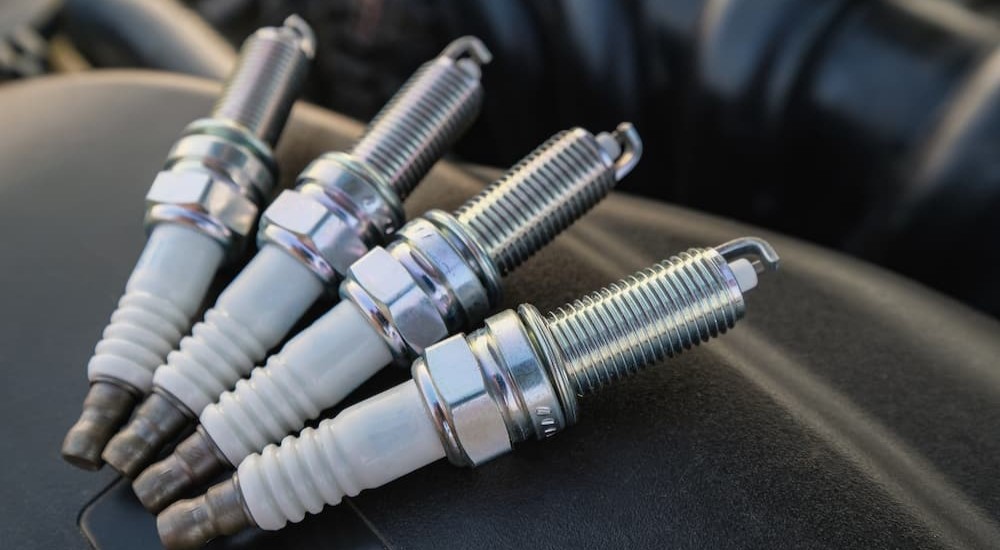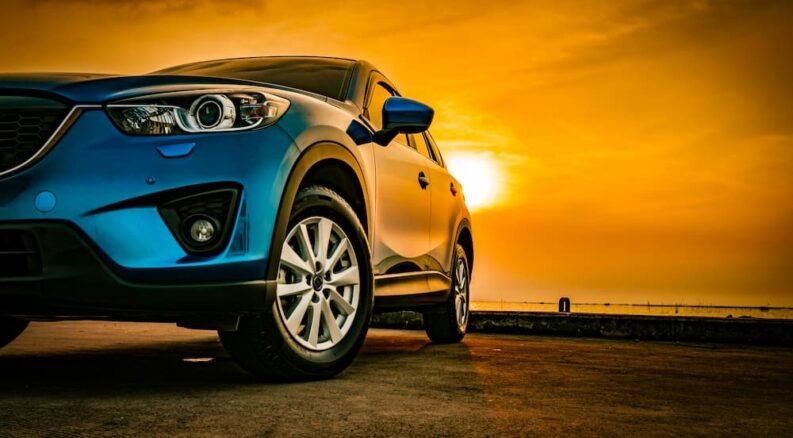Driven by technological innovation and tightening efficiency standards, fuel economy has been on a steady rise for decades. In 1970, the average vehicle posted a lowly 12 MPG, which rose to almost 17 MPG by 2000. The last twenty years have seen even more impressive growth, with an average MPG of 25.4 in 2020—an increase of more than 50 percent—but that could just be the beginning. Earlier this year, the National Highway Traffic Safety Administration (NHTSA) proposed a bold plan to raise fuel economy standards to a fleet-wide average of 58 MPG by 2032. That’s certainly an ambitious goal, but with the advent of new hybrid, plug-in hybrid, and all-electric models, it may not be as far-fetched as it first seems.
But 2032 is still a long way off, so what’s a driver to do if they’re looking to improve their fuel economy? We all know that good driving habits can go a long way in upping the MPG, as can keeping your tires properly inflated, choosing AC over wide-open windows, and minimizing your vehicle’s weight whenever possible. Still, few drivers know there are also a few aftermarket upgrades and modifications that can accomplish the same goal. This might initially seem a little counterintuitive, as many aftermarket modifications focus on increasing power rather than fuel economy. However, squeezing a few extra miles out of each gallon can be surprisingly easy if you know what to look for. Read on as we take a closer look at some of these efficiency-minded mods and see how simple it can be to save a little money at the pump.
Tires
As we mentioned above, proper air pressure can noticeably impact fuel economy, but so can the tires themselves. It all comes down to what’s known as rolling resistance. The higher a tire’s rolling resistance, the “stickier” it is and the more energy it takes to get it moving. While that’s a good thing for high-speed racing applications, it’s not so good in terms of fuel efficiency. Tires with high rolling resistance are a detriment to fuel economy because they’re made with softer rubber compounds and tread patterns designed to maximize traction above all else.
Low rolling resistance is the keyword if you’re looking for a set of tires that will improve fuel economy. Commonly marketed as “green” tires, these lower rolling resistance tires are both harder and designed with less friction-inducing tread patterns. Rolling resistance ranges from A for the most efficient offerings to E for the stickiest tires, so do your research and watch the EU rating scale when shopping around. Lower rolling resistance tires are relatively affordable and can increase fuel economy by up to three percent, but they come with disadvantages. They’re not as durable as your average tires and can also present handling and performance issues when faced with wet, icy, or snowy conditions.

Spark Plugs
At the heart of every engine, a set of hard-working spark plugs keeps everything purring. Any driver who has ever experienced that tell-tale rough idle, sluggish acceleration, misfires of knocking knows the signs of old, worn-out spark plugs when they see them. Still, poor performance isn’t the only reason to install a new set of plugs. While they’re pivotal to the internal combustion process, spark plugs also play an essential role in overall fuel economy. The more accurately a spark plug fires, the more efficient the combustion cycle. This efficiency translates directly into fuel economy, which means spark plugs should never be treated as an afterthought.
The standard copper or silver spark plugs that come on most new cars, trucks, and SUVs are serviceable, but if you’re looking for an upgrade, platinum, double platinum, and iridium spark plugs are the answer. These high-quality spark plugs have considerably improved firing accuracy when compared to their stock counterparts, making them the go-to choice for drivers trying to maximize performance. They’re a little pricey, but it’s well worth the investment when considering the fuel efficiency boost. Generally speaking, spark plugs typically last around 30,000 miles—50,000 for platinum or iridium products. Still, you shouldn’t wait until something goes wrong to check in on them, as worn-out spark plugs can cost you up to 30 percent of your fuel economy.
Cold-Air Intake
Fuel is an essential part of the internal combustion process, as is air, specifically, oxygen. The higher the oxygen content of the air being pumped into your engine, the more efficient the combustion cycle, which is why aftermarket air intakes are such a popular upgrade for those looking to maximize fuel economy. Most drivers opt for a high-flow cold-air intake, which not only ups the intake’s size but also includes a longer pipe so that the intake can be sited further from the engine itself. Why is the location so important? It all comes down to oxygen density. Warmer air—like that found directly next to the engine—is less dense than cold air, which means that it also packs less oxygen. Estimates vary, but many sources say that a good high-flow cold-air intake can increase fuel economy by as much as five percent. Available for as little as $30 to $50, these aftermarket cold-air intakes are certainly worth the investment if you’re looking to save a little money at the pump. They’re also easy to install, making them one of the most popular upgrades when it comes to improved fuel economy.
Maintenance can go a long way if you don’t want to bother with an entirely new air filter. Air filters tend to get clogged up over time, depriving the engine of the oxygen it needs to run efficiently, which is why following the recommended maintenance schedule when replacing your engine air filter is important. The typical air filter lasts between 15,000 and 30,000 miles, but check your owner’s manual for your vehicle’s recommended intervals.

Grounding
While internal combustion vehicles are inherently gas-powered, electricity also plays a significant role. These features are tied into a vehicle’s electrical system, from your radio, headlights, and A/C to the throttle and any accessories you might have plugged into the USB port or integrated outlet. These electrical wires snake through every corner of a vehicle and eventually meet in the fuse box, but ultimately, they’re all connected to your car battery. What does this have to do with fuel economy? Well, the wiring and earth grounding terminals that keep your car battery (and any connected systems) grounded can wear out or loosen over time, which can cause certain electrical components to work overtime due to increased resistance. These overworked components can strain the system, requiring the engine to work harder and decreasing overall fuel economy.
Luckily, the issue can be quickly addressed with a bit of maintenance, a fresh grounding wire, or by installing an entirely new grounding kit. What’s a grounding wire? Just pop the hood and take a look at the negative terminal on your battery. You’ll notice a wire coming off the terminal that ends in a small metal bracket attached to the vehicle’s body. This is your grounding wire, a vital part of your vehicle’s electrical system. Power flows from the battery’s positive terminals to various electrical systems and then returns to the negative terminal through the grounding, thus completing the circuit. Using the vehicle’s body instead of a whole set of negative wires is a nifty little trick as long as it works. Over time, the point where the grounding wire connects to the body or the negative terminal can loosen, become marred by rust, or break off entirely. Installing a new, heavy-gauge wire, tightening the connection on the grounding point, or hitting the negative battery terminal with a wire brush will keep the power flowing smoothly, which means that ungrounded electrical accessories won’t put as much strain on the engine.
Fuel Economy Monitor
Suppose you’re the proud owner of a late-model vehicle. Chances are your ride already comes with an integrated fuel economy monitor. These helpful gauges make it easy to tell how much of a strain you’re putting on the engine at any given moment, which can go a long way towards reinforcing good driving habits. Maintaining a steady and constant speed with minimal braking is a great way to improve fuel economy, and a fuel economy monitor can let you know just how well you’re sticking to the script.
Many older vehicles don’t come with this feature, but that’s where aftermarket fuel economy monitors come in. Available for around $140, these fuel economy monitors plug directly into a vehicle’s OBD-II port, allowing drivers to track real-time fuel economy and various additional performance-related metrics. It’s an incredibly simple project that can pay some serious dividends. According to a study by the US Department of Energy, poor driving habits can lower a vehicle’s fuel efficiency by as much as 40 percent, which is why installing a fuel economy monitor is such a worthwhile investment.
If you’re trying to wrestle a few more miles out of every gallon, it might be easier than you think. While plenty of expensive, time-consuming projects such as exhaust upgrades, ECU tuning, and installing carbon-fiber parts and aerodynamic body kits can significantly improve fuel economy, you don’t necessarily have to spend your weekend sliding around the garage on a creeper. Sure, you might save a little money at the pump, but when you consider the money and labor that goes into some of these projects, the cost-benefit analysis can start to look a little grim. From new tires and spark plugs to fuel economy monitors, grounding kits, and high-slow cold-air intakes, achieving higher MPG can be as easy as plugging in a new part or tightening down a few screws. No matter how many new parts you install, you should remember that aftermarket components will almost always take a backseat to good driving habits when it comes to fuel economy. Make an effort to go easy on the gas, light on the brake, and avoid the sort of aggressive driving that can rapidly sap your gas tank. You can easily reduce your gas pump dependence by a significant margin.

